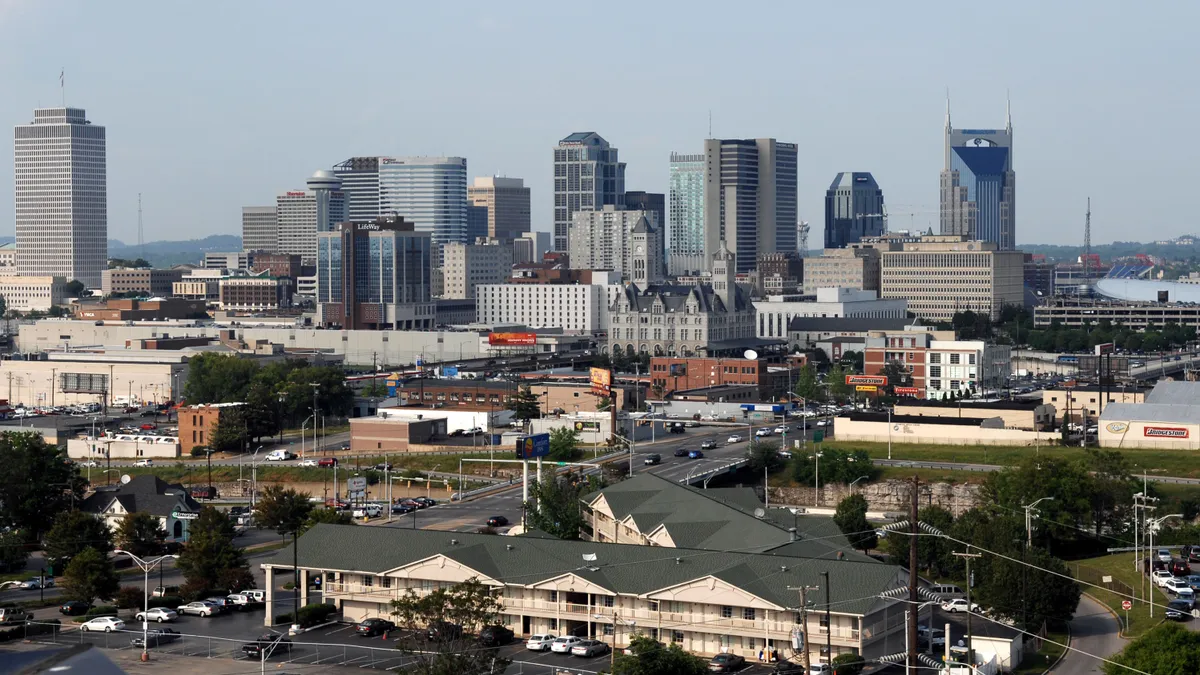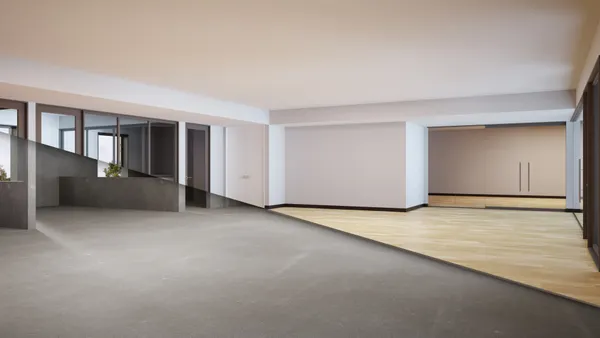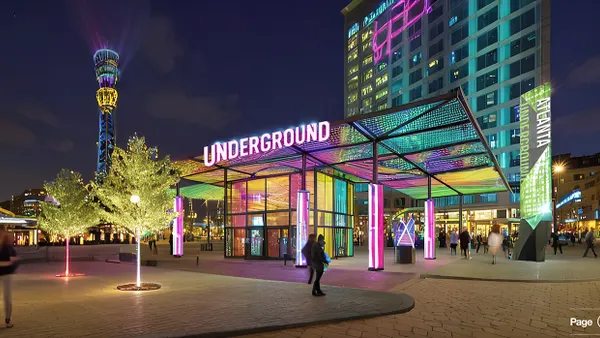Dive Brief:
- The COVID-19 pandemic rapidly accelerated changes to downtown areas and an exodus of workers to live in suburban areas, which could force permanent shifts in how downtown business districts are constructed, according to a recent report from the Urban Land Institute (ULI) and PwC US.
- The “Emerging Trends in Real Estate 2022” report, based on surveys and interviews from nearly 1,700 industry experts, found that the pandemic and economic recession did not damage real estate as much as some feared. However, the report found that lockdowns and the trend to remote work “revealed hitherto unknown reservoirs of flexibility in how the property sectors could function,” forcing a re-evaluation of both homes and shared office space.
- The report found that Nashville, Tennessee, is the top metro area for overall real estate prospects, in part because of its growth, homebuilding outlook, affordability and job prospects. Nashville was followed on the list by Raleigh/Durham, North Carolina, Phoenix and Austin, Texas.
Dive Insight:
The pandemic upended where people spend time, with many busy downtown districts seeing the most striking change. Although the report notes that the true extent of migration from cities to suburbs “may have been overstated,” it does cite evidence that cities are seeing some loss of residents and businesses. Data from the Emerging Trends report show central business districts in major cities/markets saw the sharpest declines in rents and occupancy during the pandemic. Separately, a recent Zillow study found that home values are rising faster in communities with longer commutes than those with closer commutes.
That trend will remain in flux as companies slowly reopen and figure out how often workers will actually be in the office versus at home, said Anita Kramer, senior vice president of the ULI Center for Real Estate Economics and Capital Markets. “The trend we hear from so many surveys and professionals is that a hybrid [remote work] model is here to stay,” Kramer said. “With fewer people in the office every day, that’s going to create changes both inside and outside the office. A lot of this is still a question right now.”
That shift could have major implications for all manner of downtown properties. For example, businesses may decide to lease smaller offices to accommodate fewer daily workers. Workers may also want more modern buildings that have better ventilation and better layouts that allow for social distancing, meaning that existing building stock may become obsolete or need to be repurposed. Some older buildings, for instance, are already being converted into residential or hotel space. At the same time, downtown retail stores, restaurants and other amenities will also have to adapt to fewer daily commuters and the staying power of e-commerce.
Meanwhile, the move by cities to convert some street and sidewalk space for retail or dining purposes is also likely to remain, creating more open space and less traffic in some business areas. Experts in the report said that these trends already had some traction before the pandemic, but have accelerated over the last two years. “2030 arrived early,” one developer is quoted as saying.
Altogether, these pandemic trends and changes have favored certain cities, especially smaller ones that are likely to see less of a permanent loss of jobs. A New York Times analysis conducted with real estate company CoStar found that many cities dedicate upwards of 70% of their downtowns to office buildings, led by Boston with 83%. The Emerging Trends report found that cities in the South and West, away from the coasts, are seen as the top markets for real estate, in part because of their more flexible downtowns and more affordable cost of living. By contrast, large cities like Los Angeles, San Francisco and Washington, D.C., fell in value “as high cost of living drives jobs and job-seekers to more favorable climes.”
ULI’s Kramer said the work-from-home flexibility and changing use of spaces “sets the stage” for a variety of trends that will shape cities and real estate for years. With many businesses leasing space for six-year periods, the changes will continue to play out over the next decade. However, she said, there may not be a permanent shift to the suburbs, especially as downtowns further adapt with more open space and multi-use buildings.
“The hope is that as cities rebuild or renovate their infrastructure, they can continue to provide amenities in a way that gives people a real alternative to living in the suburbs,” she said. “For years people talked about the urbanization of suburbs with these urban nodes. Now it’s kind of a reversal in that cities are thinking about how to make themselves more pedestrian and more open.”












